You started a blog on a bright, sunshiney day.
You read other bloggers’ income reports where they start making money in 3-6 months.
But that isn’t happening for you.
Enough time has gone by, and you can’t understand why your blog is not getting traffic, forget about making money.
Day after day, you check your Analytics, and you see close to nothing.
What gives?
Why are other people getting traffic, and you aren’t?
What’s happening?
You’re thinking of throwing in the towel and calling it quits.
In this post, I’m going to discuss why your blog is not getting traffic and how you can fix it ASAP.
Let’s begin.
I want to cover 2 important topics before I delve into the reasons why you’re not getting traffic.
This post includes affiliate links to products I truly (from the bottom of my heart) recommend, meaning at no extra cost to you, I may earn a small percentage which I will use to buy my poor dogs food.

Bloggers lie most of the time.
Whenever you see income reports from bloggers who make money, please understand that it may or may not be true.
For reasons like these:
- If they tell you that it took them 2+ years to make money blogging, you’re going to get discouraged and not start a blog.
- They really, really want you to start your own blog, so they can make more affiliate income and sell their products to you.
- They don’t know how to build blogs that do not talk about money.
It is morally wrong for these bloggers to tell you how to make money when they have no experience starting a blog that doesn’t deal with making money.


Wrong.
Wrong.
Completely wrong.
So, how do we fix this?
Look at a blogger’s history.
- Do they have experience with online businesses that don’t deal with finance topics alone?
- Are they showing you proof and examples that don’t involve Pinterest entirely? Is their organic traffic high?
- Are their blog posts breaking down topics instead of just making empty promises?
And most importantly: Are they willing to admit they are wrong when they make a booboo?
You have to consider all of this when you’re looking at traffic or income reports by bloggers who blog about traffic and SEO only.
Moving on.
Why is your blog not getting traffic? 23 Simple reasons
I currently have 2 blogs apart from Stray Curls – one is in the personal development niche, and the other is in the drawing niche. This blog post is based on everything I’ve learned from growing these 2 blogs.
1. Your blog isn’t niched down
As of this year, you can no longer start a blog in a broad niche and get traffic quickly.
Google has implemented heavy algorithm changes in 2020 and 2021, and it is no longer easy to rank websites that cover broad topics.
For instance, starting a Pet blog today is a super, duper bad idea.
Why?
It’s too broad.
However, it would still be too broad if you narrowed it down to dogs.
It’s better but not optimal.
But if you talk about only labradors, you will be able to rank quickly.
Why?
- Google likes topical authority – it means that you are solely focused on 1 topic, and it will help Google understand you are an expert if you release 30 blog posts in 3 months about ONLY labradors.
- You will be able to cover multiple low-competition topics and keywords in that 1 niche – this will bring you more traffic quickly.
If I enter a query in Google search writing, “Why is my labrador shedding fur?”
Which SERP will I click on?
- 13 Reasons why dogs shed – www.allaboutpets.com
- 13 Reasons why your Labrador is shedding – www.labradorencyclopedia.com
The second one, right?
It’s more defined, and I will want to go to a website that is specific to my type of dog.
So, choosing a narrow niche really helps speed up traffic.
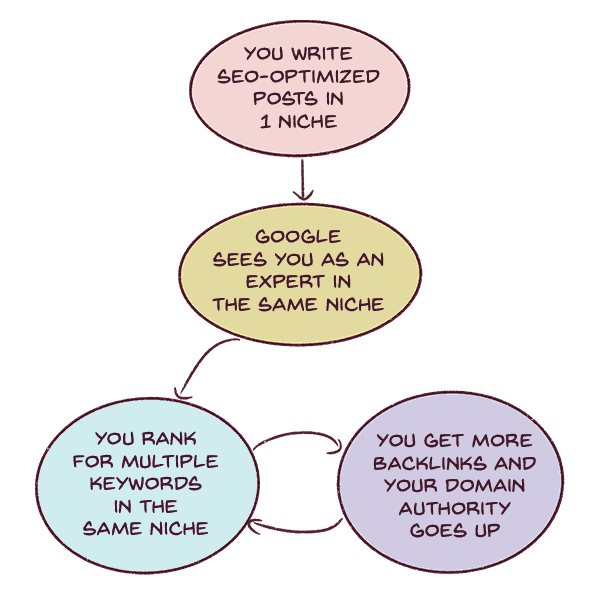

I’m not saying you cannot start a lifestyle blog or a normal blog and not see traffic.
No.
You will get traffic; it will just come around more slowly – so instead of seeing 10K pageviews in 6-9 months, you may see it in 1-2 years. It will take time.
That’s all I’m saying.
2. You’ve started a blog in a YMYL niche
If you started a blog about health or finance and you have no real expertise, then Google will not rank your blog quickly.
You cannot talk about money or health in any way (if you are not an expert) and hope to rank quickly.
Google has seen far too many websites do this, and they are now extremely diligent about ranking websites like these because they care about their users.
For instance:
- You cannot talk about medical issues (unless you are a doctor or hire one to write for you)
- Covering topics like veganism (without being a nutritionist) may not fare well for you
- You cannot talk about mental health, depression, suicide, anxiety, etc. (if you are not a Psychologist or Therapist dealing with these topics)
Please take a look at what Google has to say about YMYL niches here. And you will understand why you are not ranking.
I’m not saying you won’t rank.
It will just take you very, very long to rank – maybe 2+ years because you need to build backlinks and prove to Google that you are an Expert and have authority.
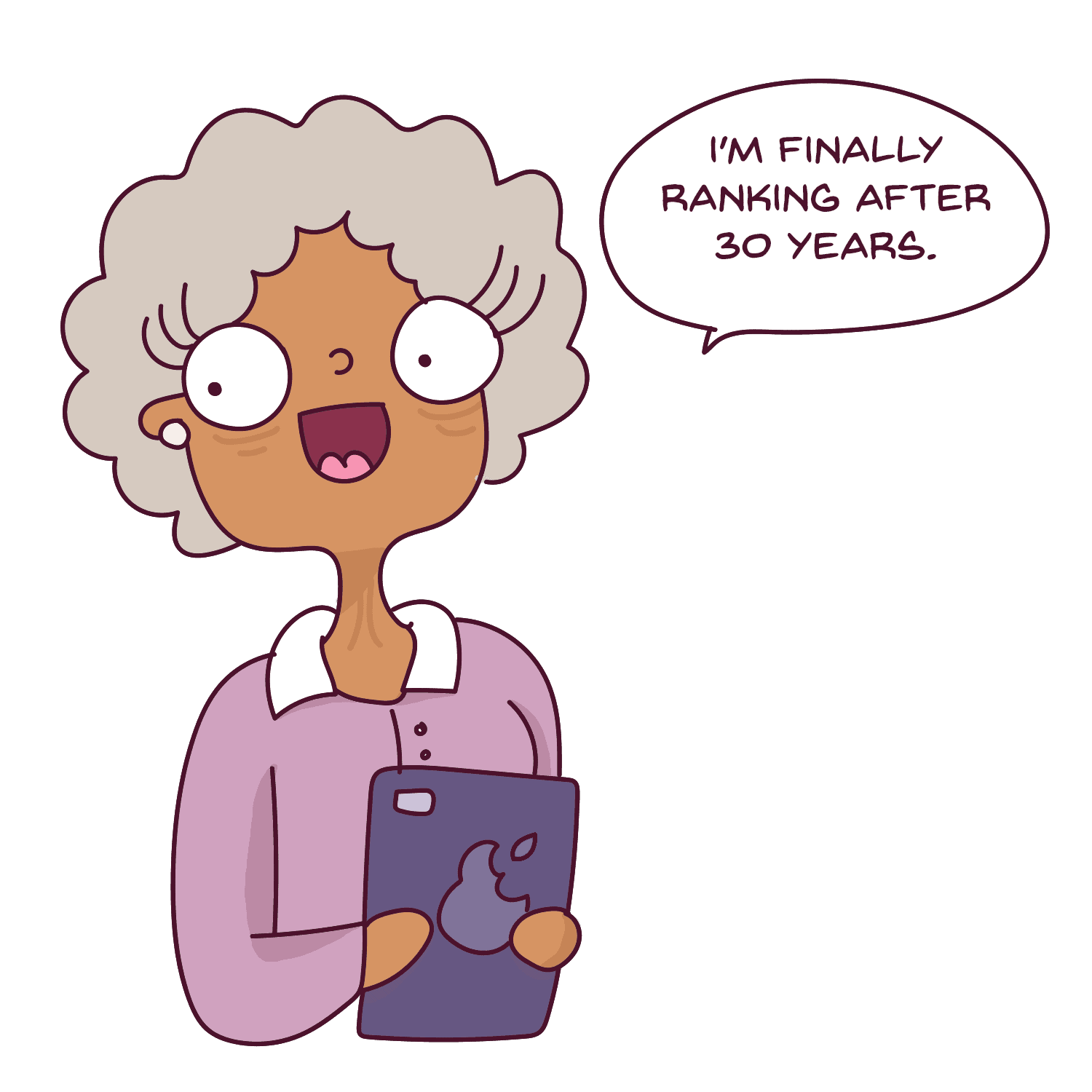

This is time-consuming.
I highly recommend choosing the easier option.
This can easily be avoided by choosing a blog niche that will rank faster.
3. Your blog is too new
It is no longer easy to get thousands of page views in the first few months.
It will take a lot of time. I have covered this question at the end of the blog post.
But Google takes time to trust new blogs.
This is one of the main ranking factors – EAT
- E is expertise
- A is authority
- T is trust
So, it doesn’t matter if you’re writing a lot of good quality posts, it will take some time for Google to index and rank those posts.
In the first 5 months, you should submit your posts to Google Search Console and request them to be indexed.
Once it has been submitted for indexing, it will take anywhere between 5-10 months for the posts to get a solid ranking.
You may even find your blog posts on page 4 or page 5 of the search results for a particular keyword, and this is normal for a few months.
Once you’ve crossed 6 months and you’re gaining some traffic, Google will automatically index your posts and you don’t need to do this.
New blogs take time.
Period.
So, do not be discouraged if your blog is not getting traffic in the first few months – it is normal.
4. You are only relying on Pinterest for traffic
Yes, social media is good for building traffic.
But please note the following:
- After the 2020 major Pinterest algorithm update, Pinterest doesn’t rank pins for at least 8 months.
- Pinterest only works for some niches.
- Manual pinning seems to be working (but nowhere compared to before)
All in all, Pinterest is no longer working as fast like before.
It takes time to rank on Pinterest.
I remember getting 18,000 pageviews in my 3rd month of blogging, and that was due to using Tailwind and Pinterest.
Back in 2018, you could get that kind of traffic quickly, thanks to Pinterest.
And so many people are reading those old blog posts by bloggers, trying those old methods, and are disappointed when they don’t get results.
Please understand it’s not you.
Pinterest just isn’t working like before.
Do your research and check out updated Pinterest strategies if at all you are keen on using Pinterest.
I only recommend 1 course for Pinterest because Carly continuously updates this course, and she tells you how to use manual pinning without buying additional tools like Tailwind and so on.
(Use PINNING5 to get a $5 discount)
Additionally, Pinterest does work on Pinterest SEO.
And if you are in the creative niche, then this Keyword tool (Use PIN20 during checkout to get $20 off) will help you. I am using it for my drawing niche.
It’s only a 1-time purchase, and they constantly update the tool.
I use only 2 features of the tool:
- To see the top-ranking pins for a particular keyword – this helps me understand how many saves (it shows you the number of saves) I can expect to get and what kind of pin designs work well for those keywords and topics
- Top keywords for a certain topic – very useful to understand what keywords I should be using in the description and title of my pins
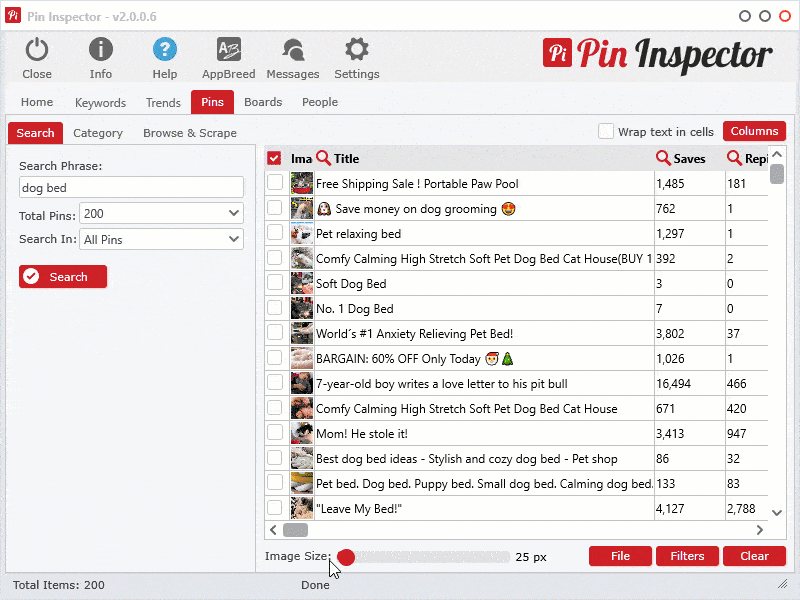
5. Your keyword research game is poor
Keyword and topic research is very, very important.
A lot of people will tell you that you should target high volume, low difficulty keywords.
Yes, this tactic works only under 2 conditions:
- If you were using this tactic prior to 2019
- Your blog has a domain authority of 30+
You cannot rank for high volume, low difficulty keywords if you have just started a blog.
Sorry.
That is not how it works.
You have to aim for keywords that are very low volume with very low difficulty.
I currently use Ahrefs (but it is expensive – about $99 a month) and if you’re looking for an alternative keyword tool, please use Keysearch (use my coupon KSDISC to get 20% off).
You have to look for keywords (in your niche) that have a minimum volume of 30 and a Keyword Difficulty of 0-9.
Please don’t use free tools like Ubersuggest (not entirely) because they do mess up the search volumes.
If you target these keywords, you will get more traffic than you bargained for; let me explain.
I targetted a keyword that had only 30 searches a month.
I am getting around 1000 pageviews for that keyword alone.
How?
I am ranking for multiple keywords related to that keyword.
Let me give you an example.
If you write a post that ranks for a keyword, “How to bunnies hop?”
You are also going to rank for these keywords:
- The science behind bunnies hopping
- How do rabbits hop?
- Why do bunnies hop?
- What is the reason behind bunnies hopping?
Google understands semantics. They are clever enough to know that rabbits and bunnies are the same, and you will rank for multiple keywords.
I started my newest blog in Drawing started in early March 2022.
I’ve only been targeting low-competition keywords.
And because of this simple approach, I am already ranking for over 160 keywords in just 60 days for the newest blog.
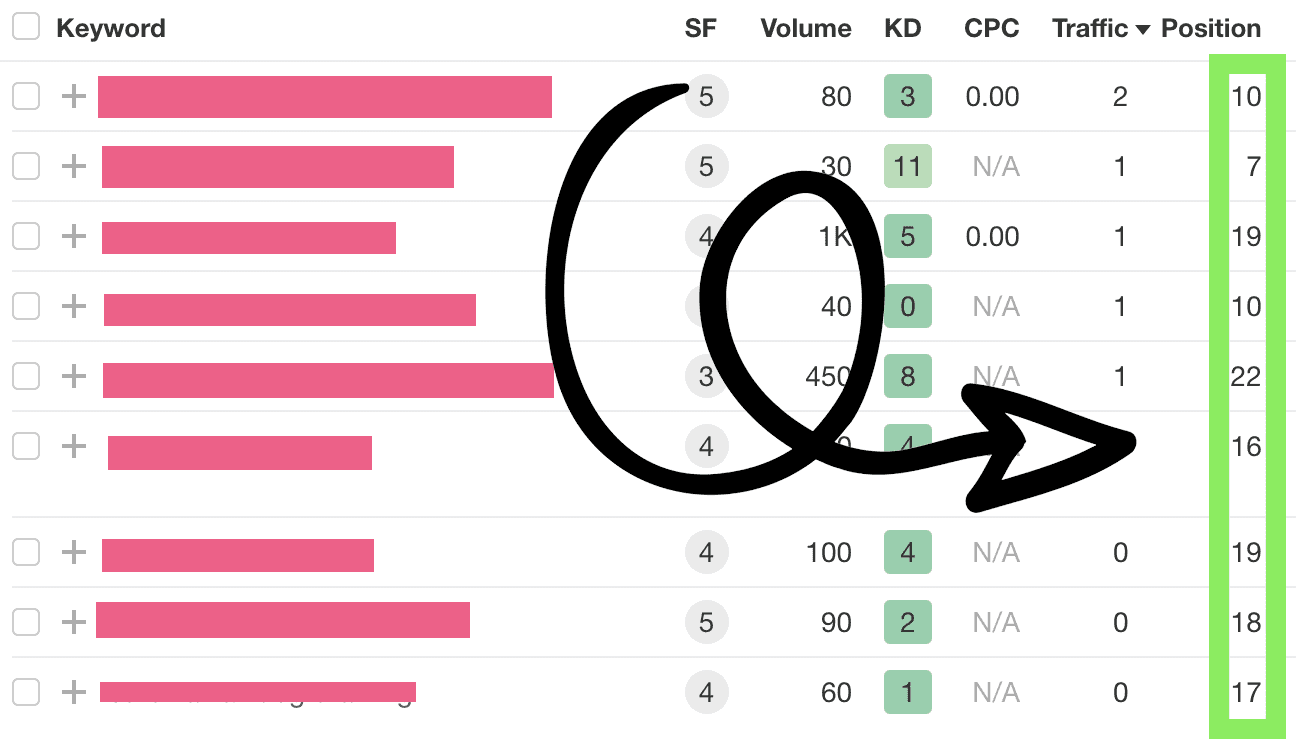

Yes, 100 pageviews in my second-month blogging – with no help and no backlinks.
So, target low-competition keywords.
It is the FASTEST way to grow.
I explain more about SEO and keywords in my eBook – SEO Blueprint here.
6. You are underestimating long-tail keywords
As I mentioned before, short-tail keywords are difficult to rank.
One of the major reasons your blog is not getting traffic is that you are trying to aim for short-tail keywords.
You can’t rank them as a new blog or a blog that doesn’t have enough domain authority.
You aren’t going to rank for “journal prompts”
But you may rank for “anxiety awareness journal prompts for teens.”
The key is to build multiple posts on long-tail keywords.
And this is how you are going to build traffic super quickly.
The longer the keyword or the topic, the higher your chance to rank on page 1.
Additionally, if you find a question where only Quora or Reddit is ranking on the front page – go for that keyword!
Because Quora and Reddit are user-generated answers, you can beat them!
Blogs are given higher priority than websites like Quora.
So, even with a domain authority of 1, you can still rank them.
Moral of the story: look at long-tail keywords!
7. You aren’t looking at your competition
SEO isn’t a topic that can be covered in 1 blog post.
But basically, a lot more goes into keyword research than just scrounging for low-volume, low keyword difficulty keywords.
You need to type in your keyword in Google Search and look at the front page of Google.
Please download the free Ubersuggest Chrome extension.
Now, look at the domain authority of the websites on the front page ranking for that keyword.
If you are a new website, you cannot hope to rank for a keyword that big players target.
You cannot beat websites like
- Wikipedia
- Wikihow
- USA Today
and so on.
It is close to impossible.
As you keep blogging in your niche, you will learn who the big players are in your niche.
Make a spreadsheet of people you can beat.
Their domain authority should be no greater than 35.
These are the people you should target.
A few more points to note:
- Always sign out of Chrome when researching keywords (Google learns what you want to see and will show you biased results)
- Use a VPN if you’re outside of the United States (Especially if you want to target a US-based audience)
8. You do not understand the keyword intent of the article
I cover this extensively in my eBook – SEO blueprint.
But basically, you need to understand what the person is looking for when they’re typing in a keyword.
For instance, I recently wrote a post on how to wait for love patiently on my personal development blog.
I didn’t just give tips on patience.
Anyone can do that.
People aren’t coming to my blog to learn about patience.
If anyone is reading that post, they want to learn how to find love fast.
So I explained my backstory on how I was dealing with single life and told them how long they could expect to wait to find love.
I also went on to write about things they could do to speed up the process.
The idea behind keyword intent is to think about your topic for a while.
Take some time away from your computer when you’ve decided to write about a topic.


Don’t just get the keyword and start typing away to glory without understanding what the person is looking for.
You are writing for humans – not machines.
Please keep this in mind.
For instance, you are probably reading this blog post because you are not getting traffic.
But you might also have other questions like:
- How long does it take a new website to get traffic?
- How do I get my blog noticed by Google?
- How can I increase traffic to my blog?
- How many times a week should I post on my blog?
I have anticipated these questions because I’ve taken some time to think about what you are trying to look for.
And I have answered all these questions at the bottom of this blog post.
9. Your titles are super boring
Forgive me for bursting your bubble.
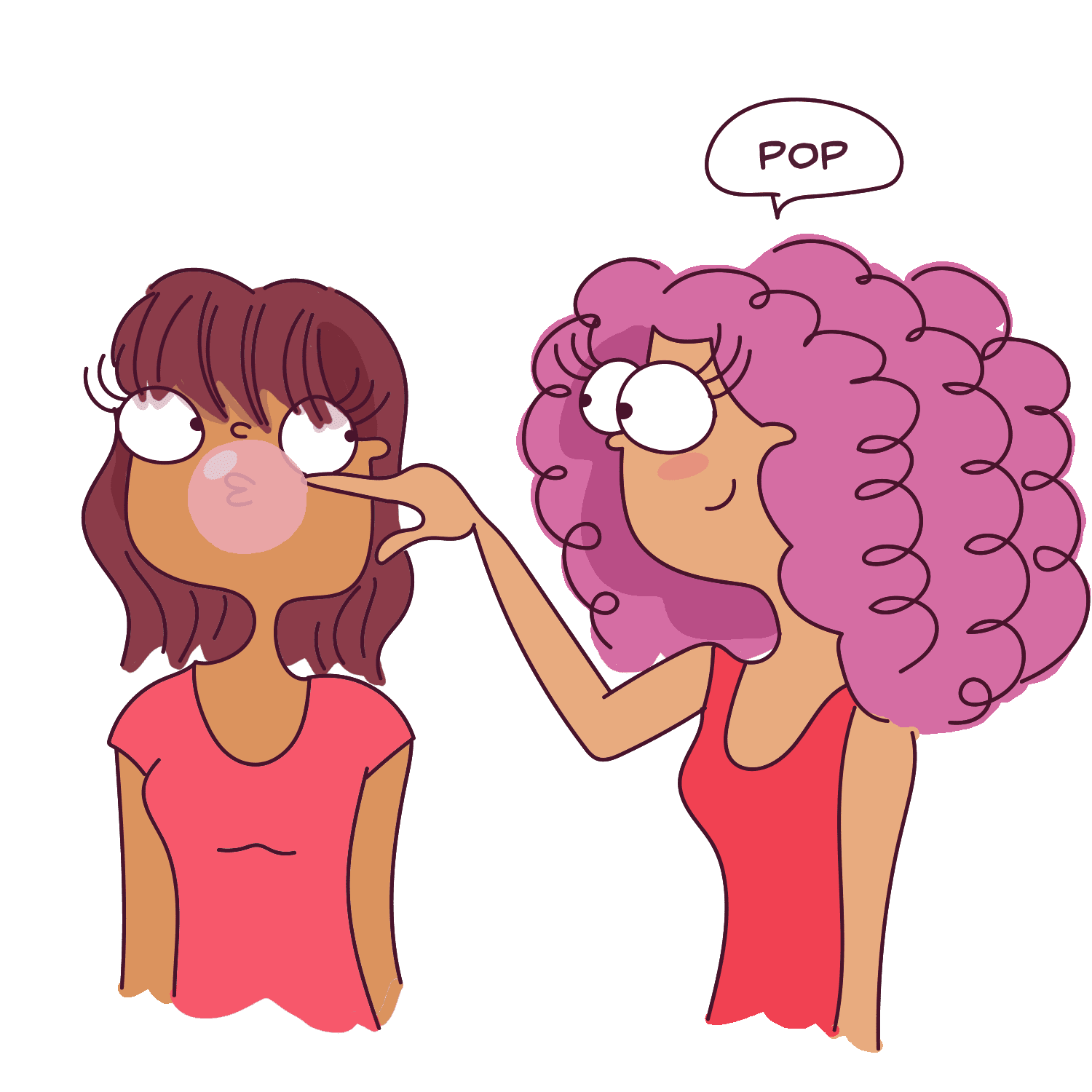

But if you keep your blog titles like everyone else, how are you supposed to stand out?
You don’t need to stuff your keyword into your title for Google.
It’s okay if the main keyword is there, but it doesn’t need to be the whole long-tail keyword.
As long as the message is conveyed, that’s good enough!
Google is learning every single day, and they are smart enough to understand what your blog post is all about.
So, take your time to craft a very clickable title.
And it’s okay if you don’t spend too much time on your meta-description. Google shows the meta-description based on your website’s content now.
Here is an article I found on writing good blog post titles.
10. You are not writing quality articles
Remember how I said earlier that keyword intent matters?
There is a lot that goes into writing blog posts.
And if your articles aren’t high quality, they aren’t going to rank on Google.
Let me explain how this works.
Google will test the article by ranking it somewhere for the keyword you are targeting.
And they will watch.
When people click on your article, Google will observe:
- How long is someone spending on the article?
- Are they happy with what they read and close the page? This is a good ranking factor – it means the person’s question got answered, and they’re carrying on with their life. Yay.
- Are they returning back to search results to click on another result? This means that you haven’t written a good enough blog post and the person is unsatisfied with your post.
Google uses this metric to judge the quality of your posts along with other ranking factors.
But this could be the main reason you aren’t getting traffic – that you aren’t writing good quality posts.
So how do you remedy this?
First of all, write for your reader, not for Google.
Spend some time figuring out what the person wants.
And then write an outline of your post.
Read these posts to understand how to write good quality blog posts:
Writing is tough at first.
Perfection and writer’s blocks will handicap you.
It’s very normal.
But you will only be able to write faster and write better posts with practice.
Writing quality articles doesn’t necessarily mean writing long articles.
It doesn’t mean you need to ramble on and on till you get the point across.
You just need to help your reader understand the topic.
If the topic is too big to cover, then you can break it up into little posts.
That’s how you get your reader to understand that you possess the answer to the question.
Your writing will evolve as you keep writing.
11. Your blog posts aren’t optimized for SEO
If there is the only thing you have to learn about blogging, please let it be SEO.
If you don’t have time and can only master one thing – let it be SEO.
SEO means you are optimizing your content for Search Engines.
Because no matter how brilliant Google is, it will always and forever be a Search Engine.
So, you have to pay the minimum homage to Google by formatting your posts properly.
This means identifying the main topic and writing a title in H1.
And all of the headers in H2 and H3.
Outlining your post properly and writing it for people and machines.
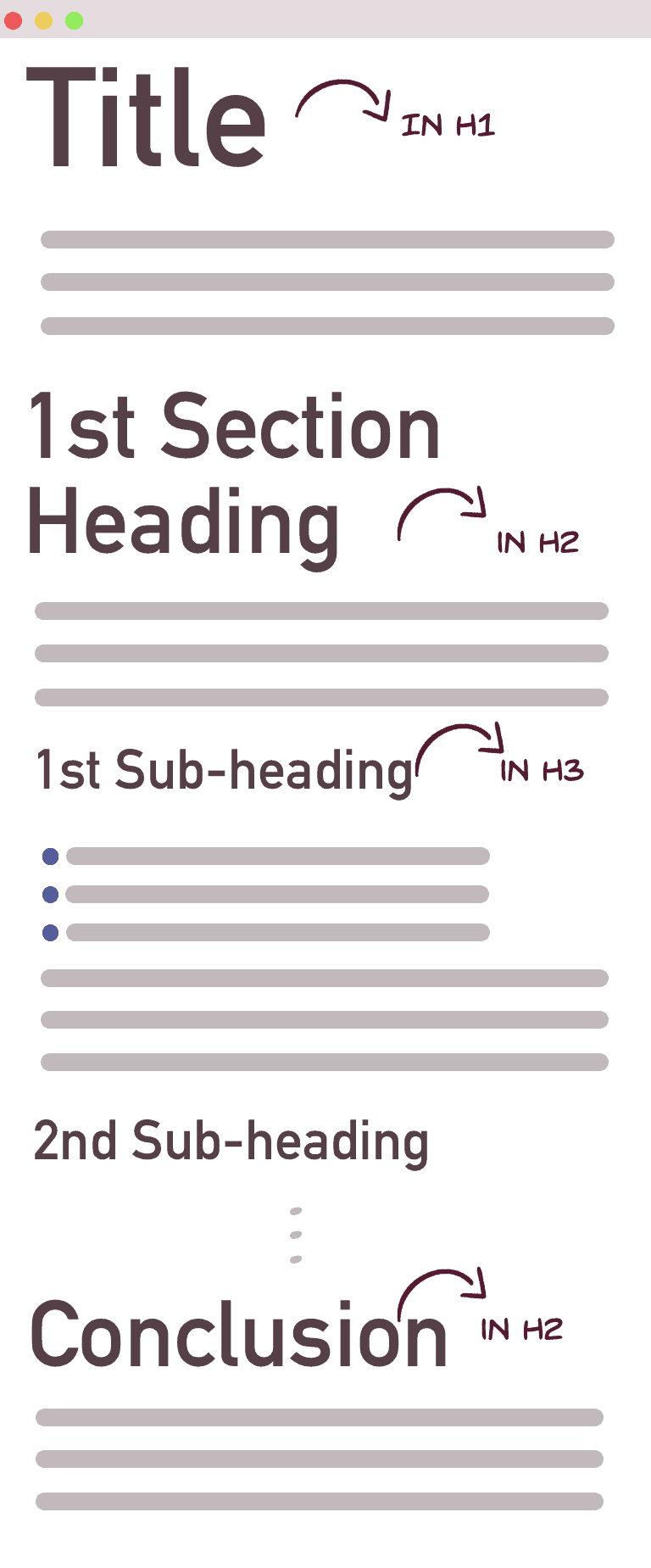

I explain how I structure my posts in this eBook.
There is a knack for writing blog posts, and it comes with patience and practice, along with a lot of learning.
12. You are not bringing anything new to the table
If you are going to spin everything you see on the web into your own article, how do you expect to get quality traffic?
That’s not how traffic works in the long run.
If you want to talk about a topic slightly differently – bring something new to the table.
Ask yourself what is missing from all the blog posts you see on the front page.
I did the same thing for this topic.
I noticed that most of the blog posts that discuss why a person is not getting traffic have mentioned outdated points because the articles were written so long ago when SEO was different and Google behaved differently.
So, I decided to write something that makes sense today.
If you are struggling with traffic to your blog, I guarantee that you are making at least 2-3 mistakes mentioned in this blog post.
I know because I have made many of the same mistakes.
13. You aren’t writing enough articles
I publish 2 articles a month on Stray Curls.
It’s not enough.
That’s why I don’t get hundreds of thousands of page views on this blog.
I am also in a very competitive niche.
It doesn’t matter, because I live on product sales mainly. I do not require that kind of traffic for Stray Curls.
But for my newest blog, I am currently writing over 15 articles a month.
I would write more, but because it deals with drawing – I have to finish a drawing project before completing the article – this takes a lot of time.
I am still writing 5 articles a month for my second blog, Mind Space Cafe – it would grow much faster if I could write 15-20 a month, but I am patient with this blog because it’s a personal blog, and I don’t mind that it’s taking time.
Bottom line: You need to write a lot of content.
Especially in the beginning.
You have to write at least 10 articles a month as of now because people are starting blogs left, right, and center.
You are in a race.
Quality matters, but quantity has become more important in the last 2-to 3 years.
Google has changed its algorithms.
You can’t write two 5K word posts a month and hope to beat people in your niche.
It isn’t possible anymore.
Not right now.
So, spend less time researching and studying and more time writing content.
It doesn’t need to be perfect.
It just needs to get done.
Take some time at the beginning of the month and create a content plan. Ask yourself how much time you can dedicate to writing posts and do just that.
14. You aren’t interlinking your content
God help me when I say that this is the one task I hate from my very core.
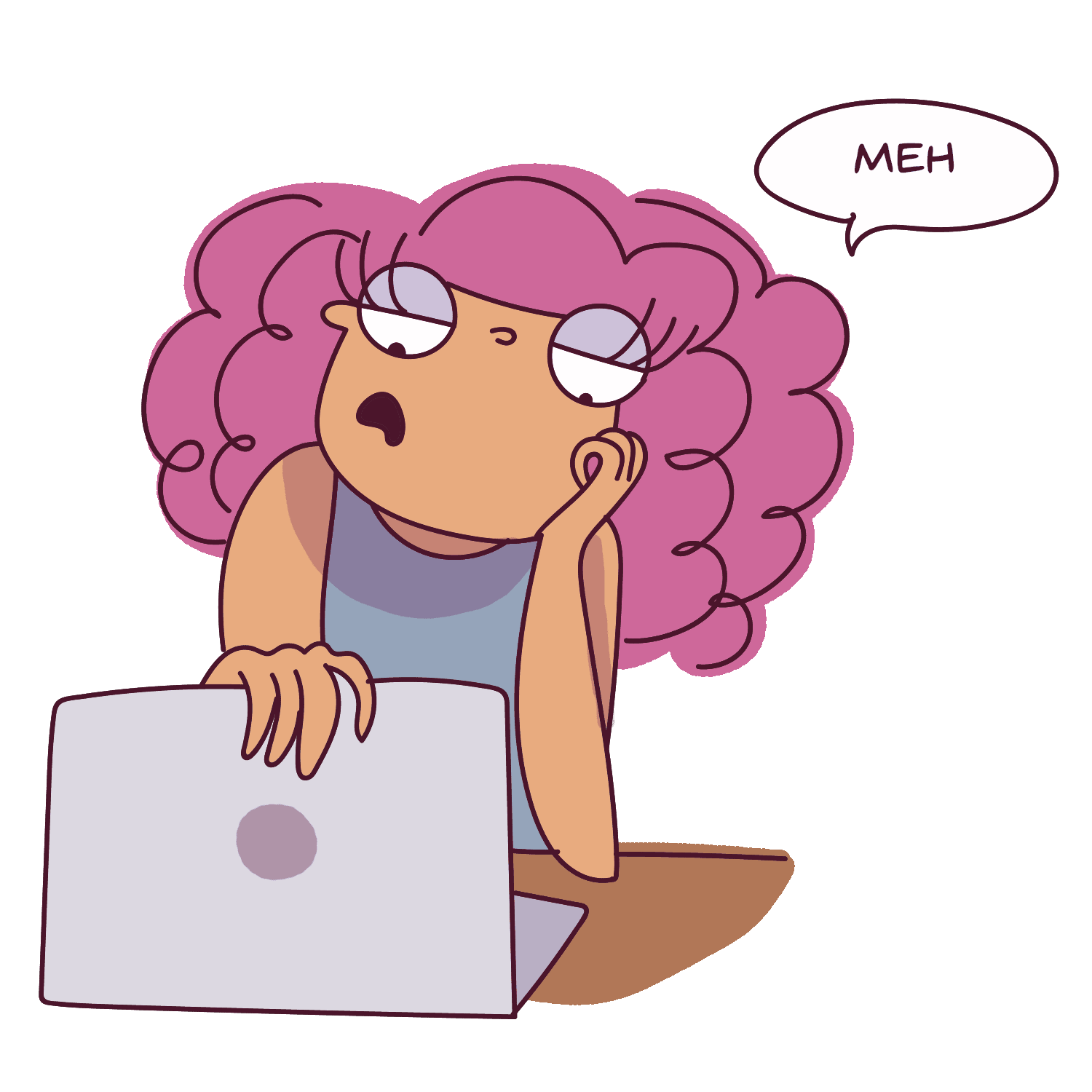

But it is absolutely necessary.
When you write a brand new blog post, you need to pass it some juice.
Not literally, no.
But link juice from your previous articles – the ones that have been on your blog for a long time.
For multiple reasons:
- It helps people reading those articles to find the new ones you’ve just written
- Interlinking helps Google understand what your blog post is about
- It passes link juice – which helps the page authority increase
Interlinking is super important.
And you can do it once a month in the beginning or once in 2 months if you’re super lazy like me.
15. You are wasting too much time planning
There is a huge “Kick me” sign on my bottom right now because this has been me since 2018.
I’d plan and research and then plan and research again.
I’d sit and create multiple plans with multiple planners.
For people with anxiety (look at moi), planning can be such a beautiful hobby.


Unfortunately, it gets in the way of writing and publishing a lot of content.
Take it from someone who has spent years trying to put blinds on her eyes and work hard; you have to cut down the planning.
If you are spending more than 2-3 days on a blog post – NO.
That is wrong.
You have to learn how to write a blog post in less than 3-4 hours, tops!
Nobody is going to print your articles and worship you.
They might stalk you, but they’re not going to treat you like a God.
Your blog is a business.
Do not make it your Bible.
Just focus on getting as much content out there as possible.
Your need for perfection will hamper your progress. The idea is to write as much as you can about your niche – so do that.
By the end of 4 years, you should have at least 400-500 articles on your website.
Ask yourself if, at the rate, you are going now, will that ever happen?
If the answer is no, then stop wasting time planning.
Plan and keep goals, but don’t overdo them.
Sit at the beginning of the month and make a list of your tasks.
Focus more time on creating content than living inside of your head.
News flash:
Your subscribers can’t see all the wonderful things you have planned for them.
They can only see what you’ve published.
Thank me later for this gold nugget.
16. You are wasting time with things that don’t matter
By now, you must be thinking, “This woman is mad. She’s asking me to write 10-15 posts a month. When do I get time for Facebook or promoting after writing articles?”
You don’t.
If you’re a working mom with kids or college, you don’t have time to do everything.
So, don’t try to do everything.
If you don’t have time to make pins, give up Pinterest.
If you don’t have time to go on Facebook groups and promote your article, give it up.
Eliminate everything that is going to bring you menial results.
The second I noticed that Pinterest was bringing me abysmal results, I cut it down to only 10-15 minutes a week.
I make 10 pins a month for Pinterest for Stray Curls. I pin only 2 times a month – 5 pins at once now.
That’s it.
Pinterest doesn’t work that well for blogging and online business niches. It works very well for drawing, creative and DIY niches.
I don’t go over and beyond to please Pinterest for Stray Curls because I know their traffic is fickle.
Their analytics also works like a horse doing math.
Let me show you what I mean.
This is the Pinterest Analytics for my newest blog: Look at the percentage increase it is showing me:
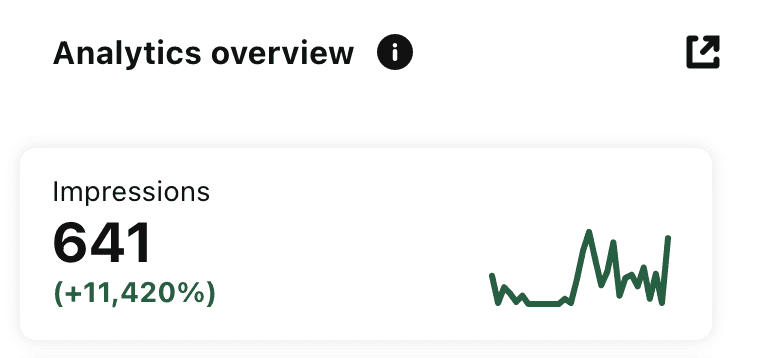

It is showing me an 11,420% increase in impressions.
Now, I’m not a math wiz like my boyfriend, but this isn’t even remotely possible.
So, if something isn’t working and something is not making sense, don’t break your head trying to fix it. If it doesn’t matter – let it go and move on.
I see so many people obsessing and crying over Pinterest Traffic.
Pinterest is free – it is social media. You cannot expect it to stay the same forever. It will change.
We need to adapt as bloggers.
Cry over it and move on. Focus on things that matter.
Facebook and Twitter bring me very less traffic, so I don’t rely on Social media for traffic.
I just focus 98% of my efforts on organic traffic.
Organic traffic is the money maker.
Focus your efforts on organic traffic. It will pay off, I promise.
Also, do not obsess on tiny details like getting a blog designer or worrying about your logo. Go with something super basic or make something on Canva.
It doesn’t matter.
Your content is what people are coming to look at.
Just focus on creating good, solid content.
17. You aren’t building content silos
Content silos are basically pieces of content around a singular topic.
For instance, if I notice that my post on drawing pencils is doing well, I will build a silo around it.
I will create multiple posts all related to drawing pencils and link each one to the main article on drawing pencils.
This is highly beneficial because:
- People who are trying to beat your main article will find it difficult to do that – they cannot beat your article easily since you have multiple articles around that 1 topic already
- Google will realize you are an expert on that topic in that niche and rank you for the main topic and the other articles connected to that topic, thus increasing traffic exponentially.
So, please build content silos.
I am working on one as we speak. Sign up to my blog by downloading my blog planner, so you never miss my newsletters.
These will help your blog immensely.
I cover more about how to build content silos in my eBook – SEO Blueprint.
18. You are not consistent with blogging
Raise your hand if you wrote 8 posts last month but got burned out and did only 2 this month.
Okay, I’ll see you in the back.
Don’t worry; I do this all the time with Stray Curls.
That’s why my traffic jumps around like a kangaroo on fizzy drinks.
Thankfully, I’ve learned my lesson and am consistent with my other 2 blogs.
Also, I have built a big email list for Stray Curls, so I don’t need the traffic since I don’t rely on the ad or affiliate income. My earnings come from my products mainly.
However, ads will be the main moneymaker for the other two blogs, so I do require to be consistent and blog consistently.
Be consistent.
You are giving a bad message to Google if you are blogging inconsistently.
And your rankings will drop.
You can afford to lax once you have 150-200 posts on the blog.
Then, you can slow down your writing rate and focus on another new blog.
The idea is to build businesses that will help make you a lot of passive income.
I wouldn’t suggest depending on 1 blog alone all your life.
Have at least 2 – that way, you aren’t putting your eggs in one basket.
So, if you are focused on 1 blog now, build another 1 a few years later in a new niche. You can hire writers or write the content yourself – the choice is up to you.
19. You are not using a good WordPress theme
You cannot use a free theme because these don’t work well in the future.
Free WordPress themes are okay, but they do have some cons:
- Free WordPress themes aren’t updated, and when your WordPress updates next, there is a good chance the WordPress theme will not work.
- It isn’t SEO friendly. It will not allow Google’s spiders to crawl your website easily, meaning you are going to find it difficult to be indexed or ranked.
- Due to poor coding, your website speed will get affected. It will lag a lot after installing plugins, and ranking and monetization will become hard. So, make sure you get a popular free theme if you’re deciding to use a free WordPress theme like GeneratePress.
When you start a website, ranking is not up to you – it’s up to the Search Engines.
A lot of bloggers complain about their traffic being stagnant after a while.
This happens because their WordPress theme doesn’t let Google crawl their pages easily.
You want to do everything possible from your side to ensure that Google is able to crawl your website.
I is your job to make crawling very easy, and choosing paid hosting and a paid WordPress theme will help you rank easily.
But if your budget is tight, get a free one now and upgrade to a paid theme later; it’s alright.
You can use Astra – it is free and made by WordPress so they will be updating it from time to time.
Or you can use…
Cheer Up
Cheer Up is currently the theme for my blog – Mind Space Cafe.
It’s very minimal, clean, and simple to set up.
It’s super pretty and highly flexible.
And its support staff is excellent!
It also integrates with a lot of plugins which I love the most.
It’s a one-time fee for the whole theme, and you get a lot of demos for this theme. I’m currently using the Sweet Crunch (Food) demo for my theme.

And this is how my website looks at the moment using this theme:
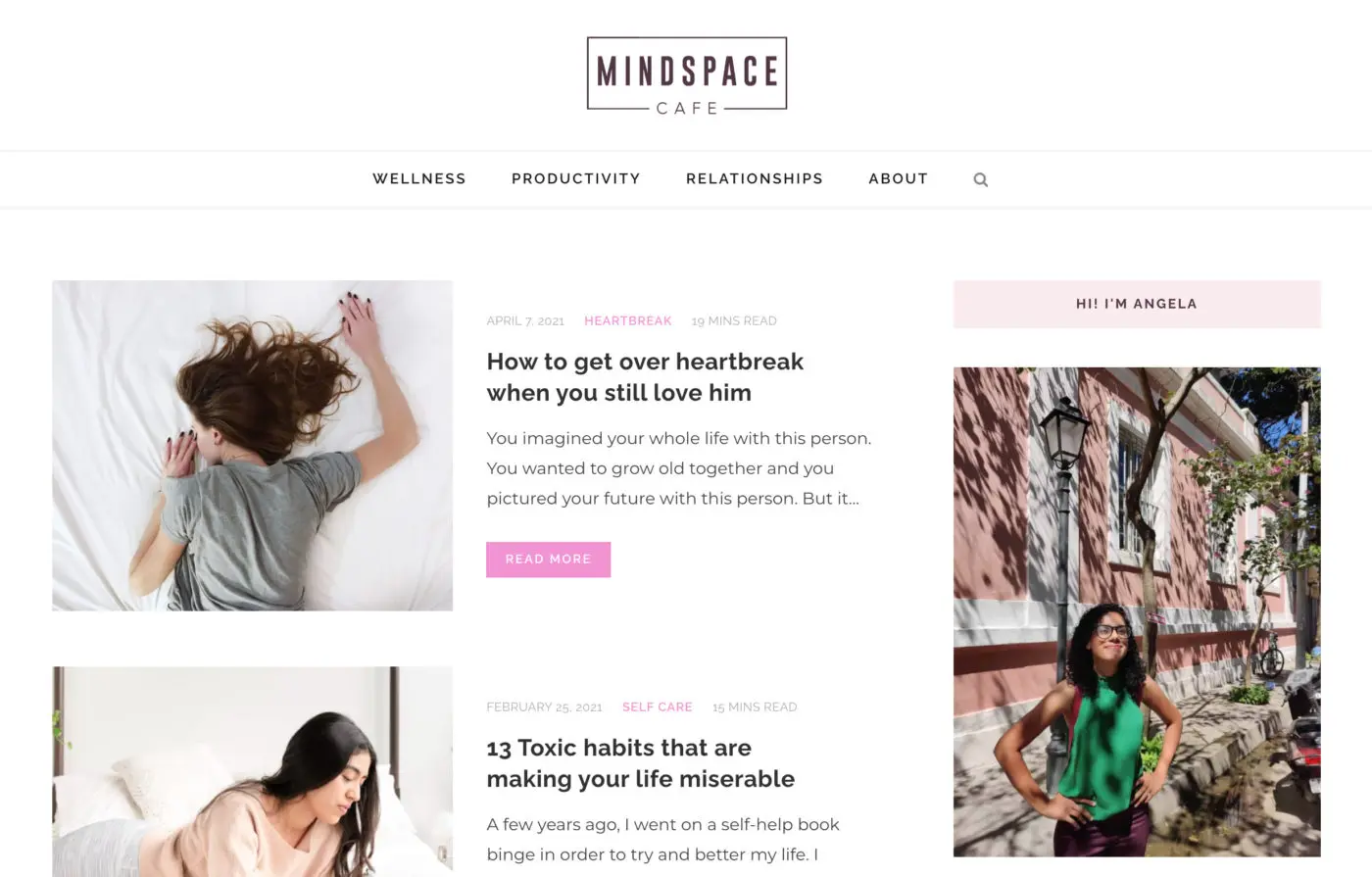
20. Your blog’s navigation is a mess
If your blog’s navigation is full of links and is cluttered, you aren’t going to be helping anyone.
Your header should be minimal.
We no longer live in the 90s.
Less is more.
So, make things less complicated and focus on the bare minimum.
Keep things simple – it will help you maintain your blog better.
Just highlight the categories. Put all the other links like Terms and Conditions, Privacy Policy, About me, etc., in the footer.
21. You are not treating your blog like a business
You cannot treat your blog like a hobby and expect it to get traffic and make money.
No.
You have to invest in the basic necessities.
Here are a couple of things you shouldn’t compromise on:
- Your blog’s WordPress theme
- A keyword tool (very important)
- Image Optimizer – just get a few credits from Shortpixel (Buy a one-time credit for $19, it will last you for a whole year or more)
- Grammarly (because it saves a lot of time editing)
If you optimize your images, your website will load faster – speed is a very important Google ranking factor.
And you’re pretty much good to go.
22. You are doing too many things
Like I said before, if you can’t manage too many things – don’t.
Your content will take off if it’s SEO optimized.
And Google will rank it any which way if you pay attention to SEO.
If you have to do just 1 thing, only write content.
This is the number 1 thing that will move your blog forward no matter what.
At the end of the day, focus your attention on tasks that move the needle the most.
Create blog income reports and progress reports at the end of every month.
Find out which blog posts are doing well and what tactics are working for you.
Do more of those.
23. Your expectations are too high
Focus on writing at least 100 content pieces in a year.
Give your blog a year. And if you’ve waited 12 months with 100 pieces of content and you have absolutely no traffic, there is something genuinely wrong.
You can find out what is wrong before quitting completely.
But if you are only 3-6 months in blogging and are not seeing traffic, this is normal.
Also, keep in mind that lifestyle blogs and multi niched blogs take more time to grow.
I’ve been blogging on Mind Space Cafe since October 2020. It is a lifestyle and personal blog that deals with relationships, self-love mindfulness and productivity – it does take time to grow since I’m covering so many topics.
And the traffic is only picking up now, 1.5 years later since I’ve only been writing 4-5 posts a month.
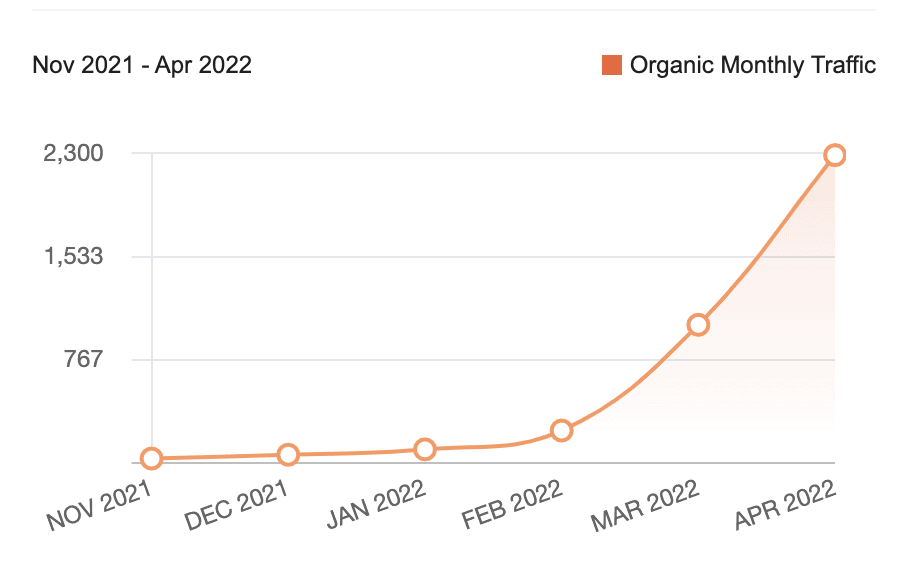

It takes time to rank lifestyle blogs.
Niched blogs grow much faster, as I mentioned earlier.
Your posts have to sit in Google for a while till it develops some foothold.
Also, because I only write 4-5 blog posts a month, I can’t expect it to grow fast like a niched blog.
The newest niched blog I started in March should get about 1K page views per month in a few months’ time because it’s highly niched and I’m writing about 12-15 posts a month.
So, be patient.
Depending on your blog type, you will have to wait.
You should expect to see a hockey stick growth after 5-10 months if you are doing everything right.
Frequently asked questions
How long before my blog gets traffic?
Here’s a realistic timeline of how many page views you can expect with your new blog, provided you have:
- Started a blog in a narrow niche
- Write 10-15 blog posts a month
- You are paying attention to keyword and topic research
- The blog posts are high quality
How much blog traffic can I get in the first quarter?
In the first quarter, you should aim to write 30-50 blog posts.
You can expect to get 100 pageviews/month by the 3rd month of blogging.
How much blog traffic can I get in the second quarter?
You should continue to write 10-15 blog posts a month, and you can expect to see 500-1000 page views per month by the 6th-month blogging.
How much blog traffic can I get in the first year?
If you have written about 100-150 blog posts in the whole year, you can expect to see 10K page views per month by the end of the first year.
This is a very drastic approach to writing that many blog posts – but I can tell you firsthand that it works.
If you write 2-5 blog posts a month, it’s going to take you much more time to get to your first 10K pageviews but you will make it for sure.
I always recommend that bloggers wait for at least 12 months of blogging before they give up completely.
By the end of 12 months and 150 blog posts, if you still don’t have any traffic, then you have either chosen the wrong niche you’re just not writing good quality content.
Either way, it would be best to get some outside help before quitting entirely.
How do I get my blog noticed by Google?
The first thing you should do is choose a niche that has medium competition.
Do not go for oversaturated niches like online business and finance unless you’re okay waiting for it to rank. These blogs take more time to rank than others.
Google also prefers experts to write about these topics.
Stay away from YMYL niches because it can be difficult to get accepted by Ad partners like Google Ads, Mediavine and so on.
Once you’ve chosen your niche, start aiming for low competition keywords or topics.
Write good quality posts and keep writing content till your blog gets noticed by Google and starts getting ranked.
How can I increase traffic to my blog?
Here are a few ways you can increase traffic to your blog:
- Write more content related to the topics that are already doing well for you
- Increase your pace. You can write 15-20 posts a month if you want more traffic soon.
- Develop content silos
- Use Pinterest if your kind of niche does well on Pinterest. I only suggest manual pinning.
You can read these other posts to help you gain more traffic:
- 7 blog traffic hacks to implement right now
- 7 holiday post ideas to skyrocket your holiday traffic
- 33 simple ways to double your blog traffic
How many times a week should I post on my blog?
If your blog is new, I highly recommend posting 2-3 times a week – that amounts to 8-12 posts a month.
The more, the better.
Google likes consistent blogs that publish content frequently. It is a sign that your blog is very well-researched and thorough, and you’re trying to keep your information current.
Once your blog is earning about 10-20K page views a month, you can start slowing down your posting frequency and then focus on other things like:
- You can start building backlinks (it will help increase your domain authority so you can go for higher-competition keywords)
- You can start another blog (to increase your blog income)
- You can hire writers to grow your blog faster
The possibilities are endless.
How can I help you with your traffic?
You can email me, and I can give you a full blog audit in the form of a written report for only $45 and help you understand what is wrong with your blog, or you can book a coaching call with me, and I can help you understand what is stagnating your growth and how you can move in the right direction.
If you’re not comfortable working with someone and like figuring things out on your own, I highly recommend getting my SEO Blueprint eBook – it will break down SEO for you, and you’ll have a good understanding of what it means and how to write SEO-optimized blog posts.
It contains my entire process of writing highly SEO-optimized blog posts that rank on Google.
Conclusion
I hope that this blog post helped you understand what to do if you don’t have traffic and how to build traffic to a new blog.
Please leave a comment below if you have any questions or doubts, I’m more than happy to help!
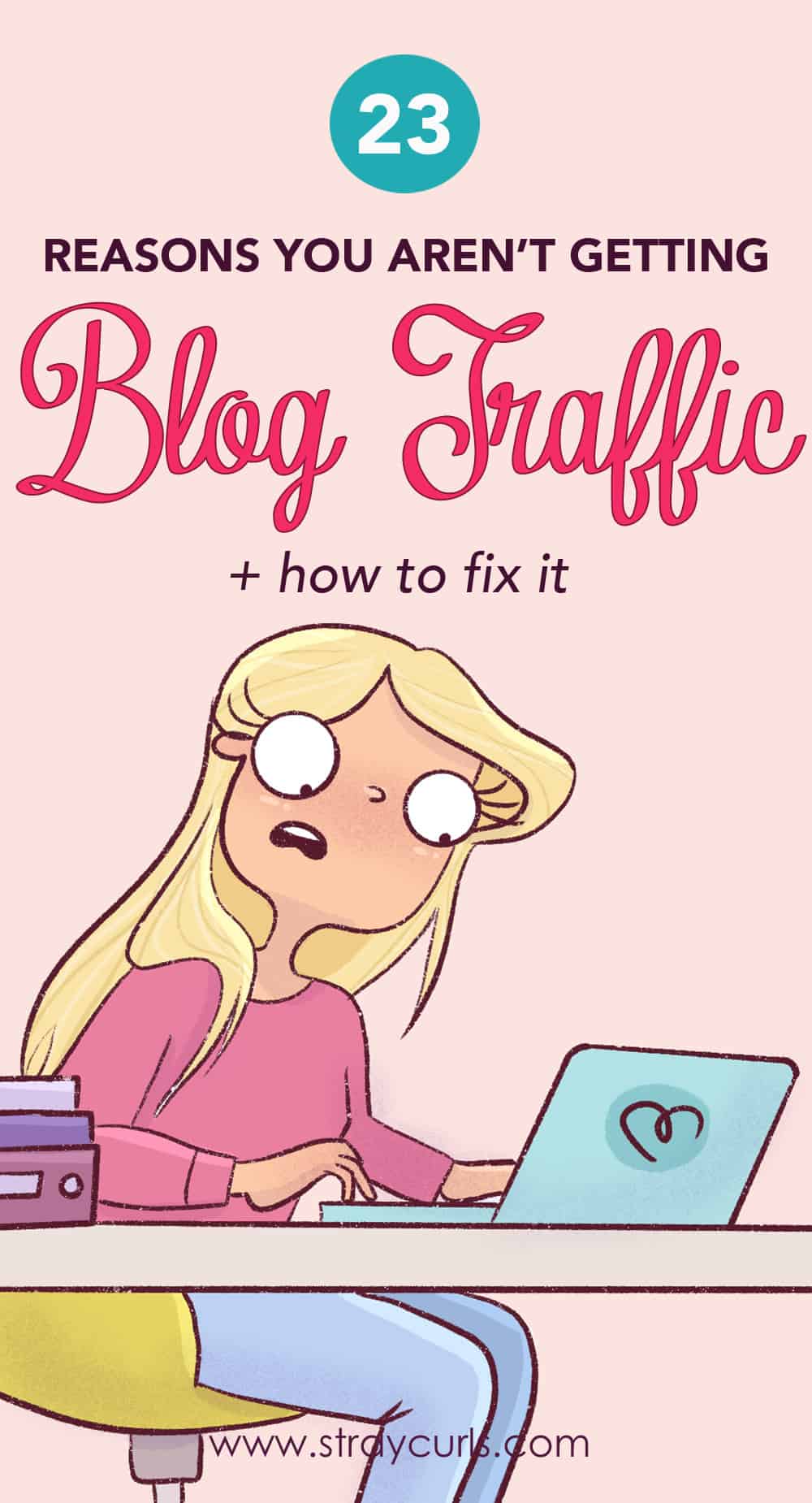

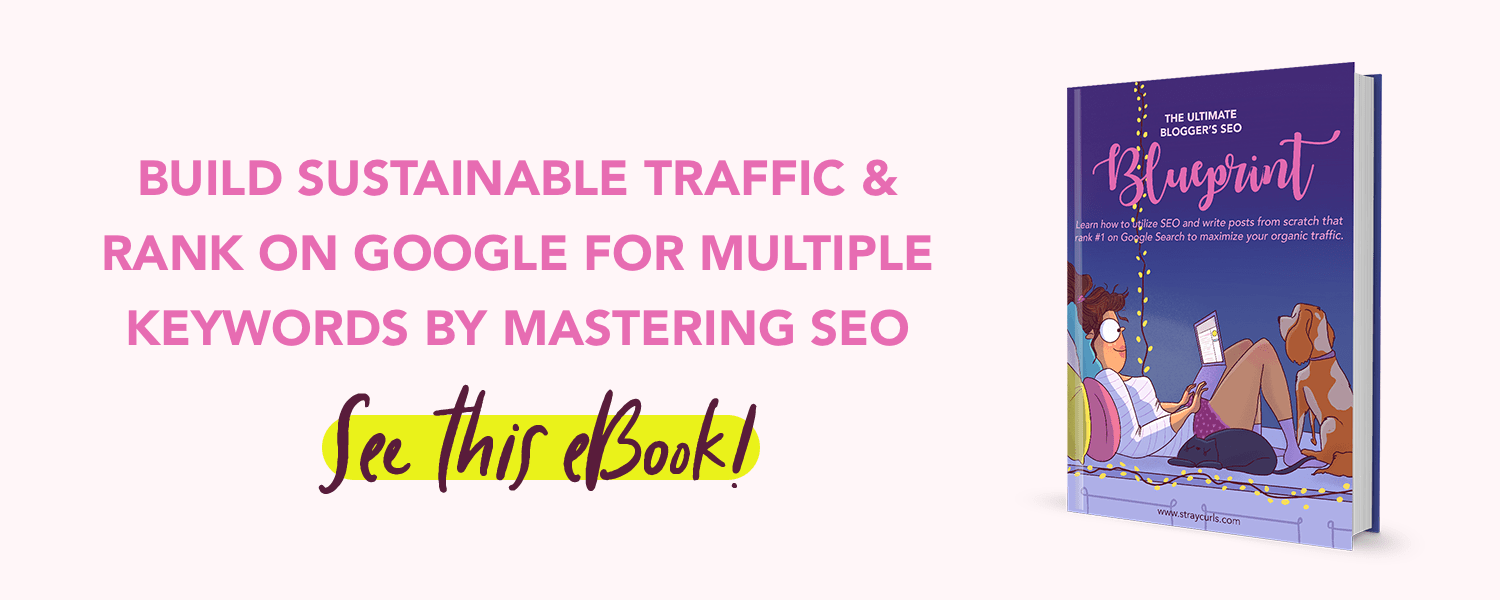
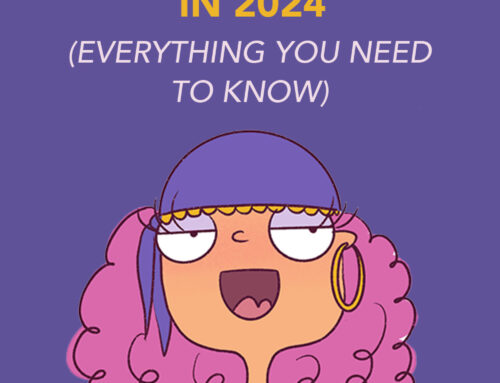
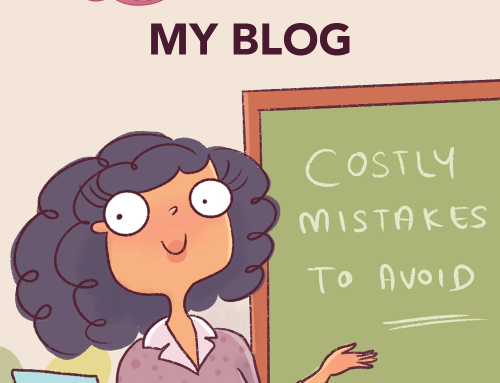
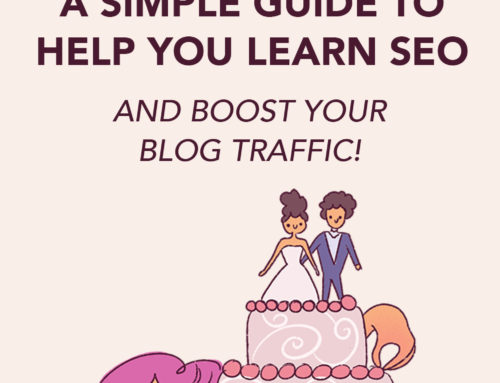
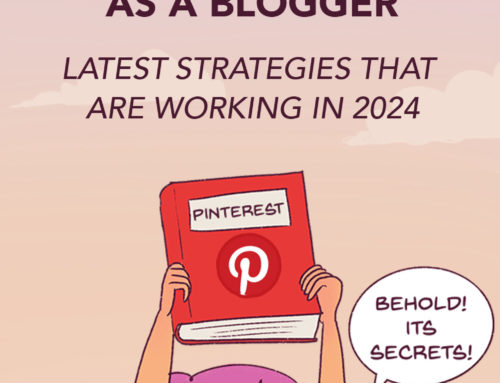
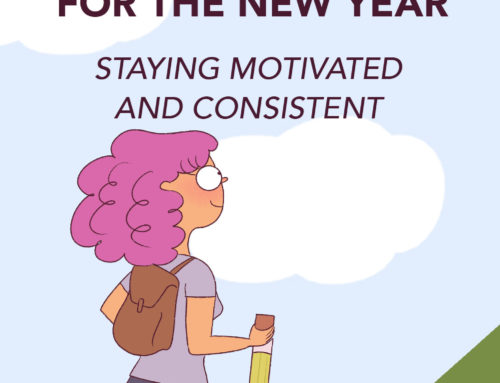
Booga Booga Angela, Hi how are you, is Nick Selimas your post was
Excellent.
Hey Nick!
Whassup! :) I’m glad you enjoyed the post.
Thank you for this post! I always enjoy your posts so much. Finally someone speaking the truth! I started a blog a year ago and had high hopes because I read everywhere that with the right techniques, one could reach 10k page views in a couple of months with Pinterest only. I gave up after 6 months because I wasn’t able to drive traffic to my site despite paying for several Pinterest courses. These courses were not up to date and I was shadowbanned so I had to delete my account. Given the time and energy I invested in it, it was so heartbreaking… It’s sad to see so many bloggers make thousands every month selling outdated Pinterest courses… I decided to give my blog one last chance a couple of months ago and purchased several of your eBooks and girl… I have to say that I LOVE THEM!!!
Hey Sofia,
You’re very welcome. =)
You can reach 10K pageviews in Pinterest – but it takes a while and only for certain niches – productivity, finance, etc. don’t do that well on Pinterest – Pinterest favors creative niches.
I’m sorry you had to delete your account. But I highly suggest focusing on organic traffic more than Pinterest because Pinterest traffic can go away anytime. It has happened to big bloggers as well. And it’s very difficult to get accepted into any Ad Program when your traffic is reliant on Pinterest – they too prefer organic traffic.
I’m sorry you bought an outdated course – I’ve done that too several times and I know the feeling of being conned and losing precious dollars to faulty products. Really sorry you had to go through that.
Thank you again for the kind compliment. Please know if you’re having any issues with blog traffic or have any questions, just ping me. I’ll be more than happy to help.
Hi Angela!
I’m a brand new bloger, I started with http://www.beautyafterthirty.com a month ago. And of course, my traffic is still close to zero. I found your post very helpful. Now I realise that I didn’t narrow my niche enough…. Or at all.
Your blog is very pretty Siggy, but yes… you have to narrow down your niche.
And a month is too less to get traffic. You can expect 100 pageviews in 3 months if you release 30-50 posts totally in 3 months – all in 1 niche.
What a complete blog post. I really need to sit down and read it again. It’s very well written and explained with so many useful information.
You never disappoint and exceed expectations.
Well done.
Thank you so much Sandra. =)
This is the information that most bloggers especially on Pinterest are not talking about. Thanks for the transparency
Yes, it does take a while for Pinterest to kick off. You’re most welcome. =)
You wrote a great post! It was packed with value. You really show up for your readers and break everything down into easy steps. I always learn something new when I read your posts. What I struggle with though is writing blog posts that are similar to one another. I know I have many posts I can do that with but not sure how to branch off with the subject or the post.
Hey Melissa,
Thank you so much. Can you give me an example as to what you mean when you say that your posts are similar to one another? Are you targeting different keywords?
Warm regards,
Angela
I don’t have any that are really similar right now. I may have explained it wrong on what I mean. I get excited and sometimes don’t type out comment right lol.
I went back and read the article again it is called silo posts. I don’t understand how to take one blog post and make a silo around the post. I have several articles I feel that I could do this with and it would probably save me some time because am always writing about something new. I can’t figure out how to make a silo around a post. I hey the general idea but as far as knowing what to write about for a silo posts I get stuck.
I hope that makes sense and I didn’t just confuse you by my question. I would love to learn how to do silo around a post so I could have more content and not be looking for new ideas all the time.
Hey Melissa,
Let me give you an example. Let’s say “How to draw a mermaid” is my pillar post. Now, my Silo posts would be:
“how to draw a mermaid swimming”
“how to draw a mermaid on a rock”
“how to draw a mermaid on land”
“how to draw a mermaid’s body”
“how to draw a mermaid baby”
Do you see how all these posts could constitute the big post? So now, I’d link the pillar post to all these posts. And all these posts will link back to the pillar post.
I hope this makes sense. Let me know if it’s still confusing.
Warm regards,
Angela
Hi Angela, really loving your blog! Your blog helped me realize something I always had at the back of my mind – that a blog is not the correct platform or format for what I want to say and write.
But on the other hand, I’m also kind of motivated to start a completely new blog in a fun niche. Either way, I just love reading your posts. I’ll be checking out your other blogs too. Mindspace cafe seems fun.
Hey Arunima,
That’s interesting. If a blog is not your cup of tea, what is? If you don’t mind me asking. Do you prefer Instagram or Youtube, or something else entirely?
Warm regards,
Angela, You know I’m a Fan of your work already. Let me say this. I have been reading your blogs for years and they are truly insightful. You have goodnews and advice to dish out each time. I’m currently creating more content as that’s one area i overlooked
Hey Faith,
So good to hear from you again. I really do love your Business. =) I’m so happy you’re creating more content! That’s what the Google Gods demand at the moment.
Warm regards,
Angela
Hi Angela
Another Beautiful and Informative post as always. I needed this one to push myself to write more. You are right that with Pinterest acting pricey nowadays, Organic traffic is our only saviour. Thanks for brushing up on so many things on SEO again.
It is a super helpful post that has inspired lazy bums like me to write more! Keep Rocking, You inspire me a lot. And the CPC of organic traffic is much higher than the social traffic, so for those who rely on google ads like me, organic traffic makes a huge difference. Thanks for an informative piece.
Hey Pratishtha,
So good to hear from you again.
Yes, writing more is cumbersome. Especially if we aren’t going to see the results for another 6-9 months.
Organic traffic is more reliable than Pinterest, for sure. I’ve honestly given up on Pinterest. I just do my 10 minutes a week on each website for all 3 blogs and leave it at that. If it picks up, great. If not, it’s not a big loss.
Yes, CPC is very high for organic traffic – that’s what I have realized with ads on Mind Space Cafe. So, if you are relying on Google ads, it’s quite helpful.
I am doing some research on Google Ads. May I ask you a few questions via Email?
Let me know.
Warm regards,
Angela
Hi Angela
Sorry I missed Your answer. If you are still doing that research on google ads, then I am more than happy to answer. Please feel free to mail me whenever you want.
Regards
Pratishtha
Hey Pratishtha,
No worries, I already published that blog post here:
https://www.straycurls.com/how-to-get-adsense-approved-fast/
Warm regards,
Angela
Perfect!